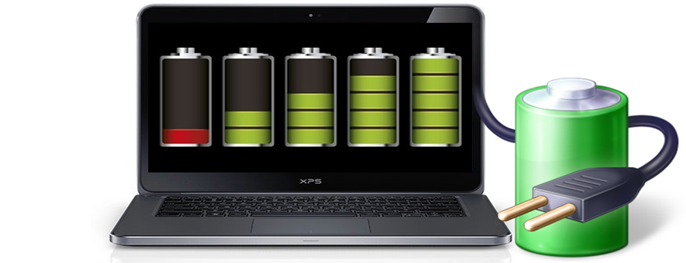How To Get The Best Battery Life From Your Notebook
Look at our most important technique to get your laptop to get the most out of the plugin; all of the things we use from screen brightness to WiFi card.
Reduce Your Screen Brightness
The most notable consumer of power in a notebook computer is the screen. Notebook makers have alleviated this somewhat in recent years by switching from CCFL backlighting units to LED, but the fact remains.
First, here’s how to adjust your screen brightness in Windows 7 and 8/8.1:
- In the system Tray, click the power plug/battery icon
- When the pop-up appears, click More power options
- The next screen will show you the available power plans; the one that’s currently selected will be bolded. Click the Change plan settings link next to it
- Now you’re looking at settings specific to your current power plan. The power plan has different settings depending on whether you’re using Dell Studio 1557 AC Adapter or on battery. Move the Adjust plan brightness slider to the desired position for On battery mode and then click the Save changes button to apply your settings.
We suggest you begin by moving the slider all the way to the left (minimum brightness) for the On battery settings and moving it up bit by bit until it’s comfortable. Remember to keep the brightness as low as you can because even reducing screen brightness by 10 percent can significantly extend how long your notebook lasts unplugged.
One brightness setting will not fit all situations; you may have to increase the brightness in a sunlit room to make the screen usable, for example.
For the best results, consider setting up your own customized power plan using our guide here.
Avoid Resource-Intensive Activities
Two other leading consumers of electric power in a notebook computer are the processor (CPU; Central Processing Unit) and the graphics card (GPU; Graphics Processing Unit). The processors and graphics cards used in notebook computers are specially designed to be most efficient at lower power states; they can throttle back their operating frequency (GHz) and voltage to very low levels. They’re only able to do this however when the user is not running strenuous activities that require significant processing power. Strenuous activities include but aren’t limited to the following:
- Photo and video editing
- Playing video games including 3D and Flash/browser-based games
- Playing video, especially HD
The CPU and/or GPU will use more power while performing the activities above. Here are examples of activities that require very little processing power for modern computers:
- Web browsing (standard; non-Flash-based websites)
- Word processing
- Music playback
In other words, try to plan what you’re going to do on your notebook in advance while on battery.
Stay Close to a Wireless Access Point
Using wireless Internet in general has a very small effect on Dell studio 1537 laptop battery life; it can have a much greater effect however if you are at the edge of the wireless router’s signal range. The wireless icon in the system tray uses a five bar indicator to show signal strength; ideally this will be at least three if not four or five (ideal). The computer is working extra hard to maintain the wireless connection if the signal strength is at one or two bars, especially if it has to reconnect often.
Another Internet-related activity that can have a significant effect on battery life is downloading large files; consider downloading these while you’re plugged into AC power. Transmitting and receiving large amounts of data uses much more power than simple web browsing.
For a detailed analysis on how wireless card usage affects battery life, take a look at our technical analysis here.
Turn off Keyboard Backlighting
Many modern notebooks have backlit keyboards; these can be turned off to save battery life typically through keyboard commands (see your notebook’s owner’s manual). At the very least, turn the brightness down a notch or two (if applicable; some backlit keyboards have variable brightness levels).
Conclusion
We reviewed several important concepts pertaining to battery life in this article. The display is arguably the largest consumer of power and it’s therefore important to keep that at a minimum; we also reviewed the impact of running resource-intensive activities such as games on battery since they require more processing power. Next we analyzed why it’s important to stay close to a wireless router (if you’re using the Internet) and to avoid downloading large files. Lastly we looked at turning down keyboard backlighting (or turning it off completely) to squeeze as much as possible out of the battery.
Did you enjoy this post? Why not leave a comment below and continue the conversation, or subscribe to my feed and get articles like this delivered automatically to your feed reader.


Comments
No comments yet.
Sorry, the comment form is closed at this time.